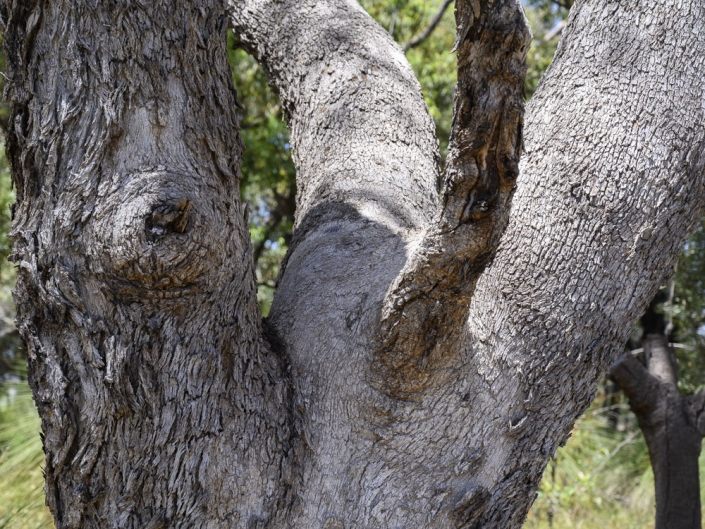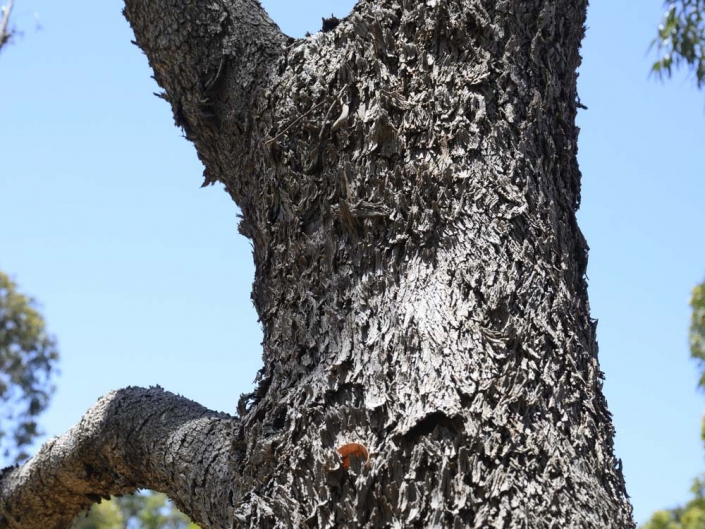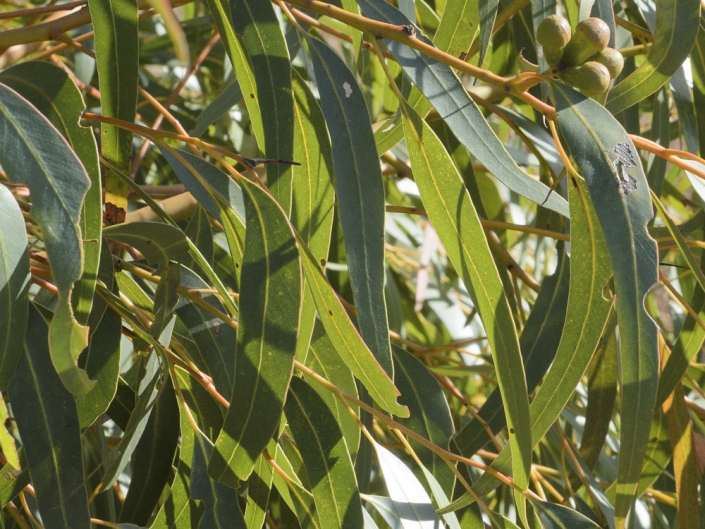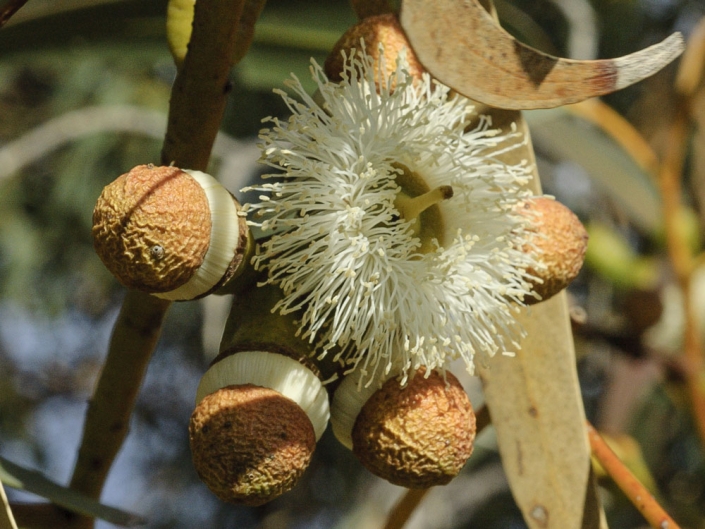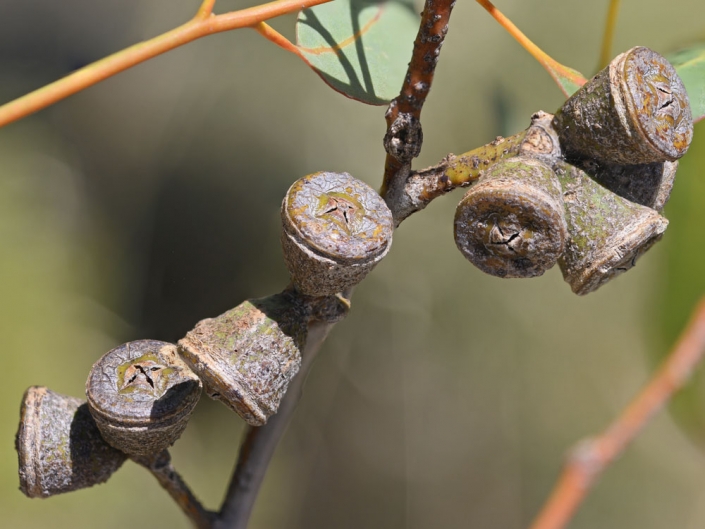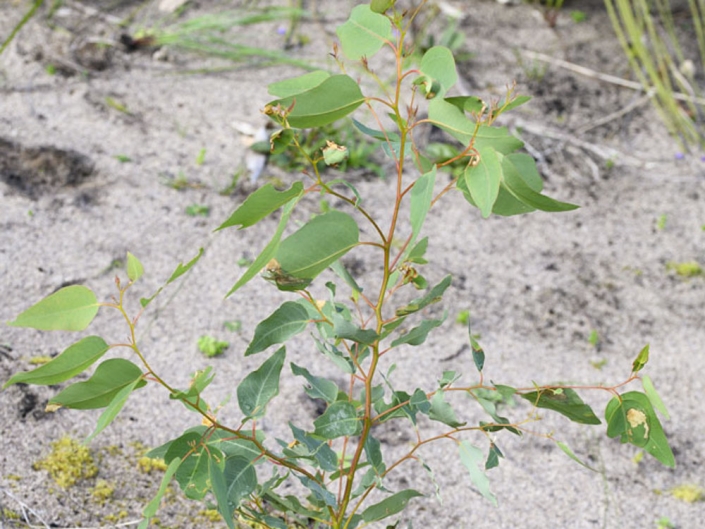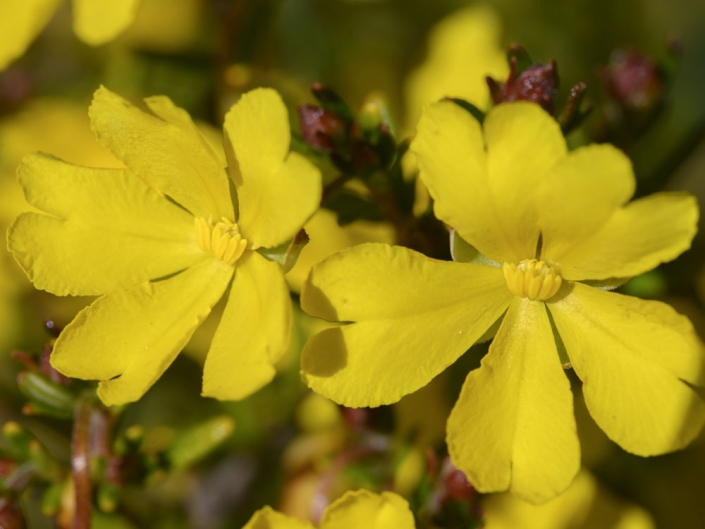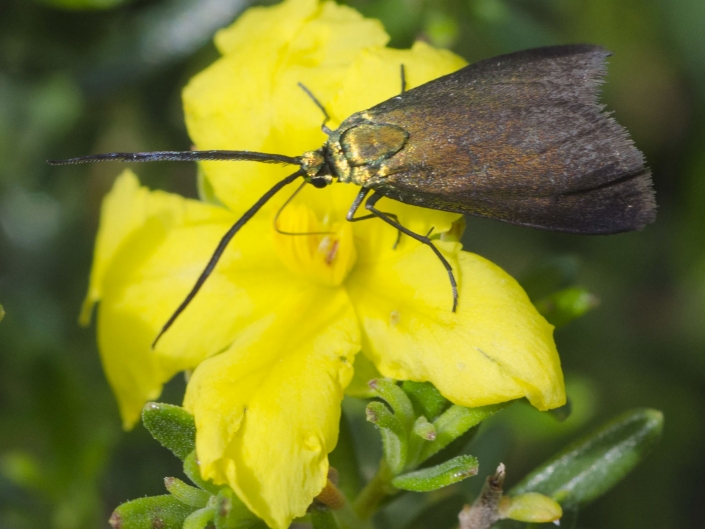Point of Interest 11: Distant Tuarts over Banksia Woodland
Location
Scattered Jarrah trees and banksia in woodland that has become very open after a severe fire in 2019. Severely burnt jarrah and banksia trees, some of which have died, occur nearby. Very tall Tuart trees that look mostly dead are visible north of the trail.
Common Wildflowers
Autumn – White Beard Heath (Leocopogon propinquus)
Winter – Grevillea vestita
Spring – Yellow Buttercups (Hibbertia hypericoides), Kangaroo Paws
Late Spring & Early Summer – Tuart
Focus Topic 23. Tuart Trees
Tuart (Eucalyptus gomphocephala) is predominantly a coastal tree in a narrow belt along the coast of WA. They naturally form the tallest layer of the canopy over jarrah and banksia trees and are relatively uncommon in Warwick Bushland, but many have been planted along Lloyd Drive. Very large tuart tree stags are visible north of the trail. Most of these trees are still alive and very slowly recovering from severe fire damage over a decade ago. Tuart trees are less resilient to fire than Jarrah and Marri since they lack the capacity to resprout from below ground (from lignotubers). However, seed released from their canopy often germinates after fire. Healthy Tuarts are the tallest and fastest growing native eucalypts in Perth and form a wide dense canopy. They have grey bark with fine and coarse scales. Their relatively large flowers emerge from buds with prominent apical swellings. These are the basis for their species name gomphocephala which means swollen head. Tuarts are home to a wide variety of insects that feed on leaves or burrow in the wood. These trees have hollow branches that are ideal for bird nests, but unfortunately most have been claimed by fire or feral bees. Tuart trees are most common close to the trail at the South Gate (Point of Interest 20).






